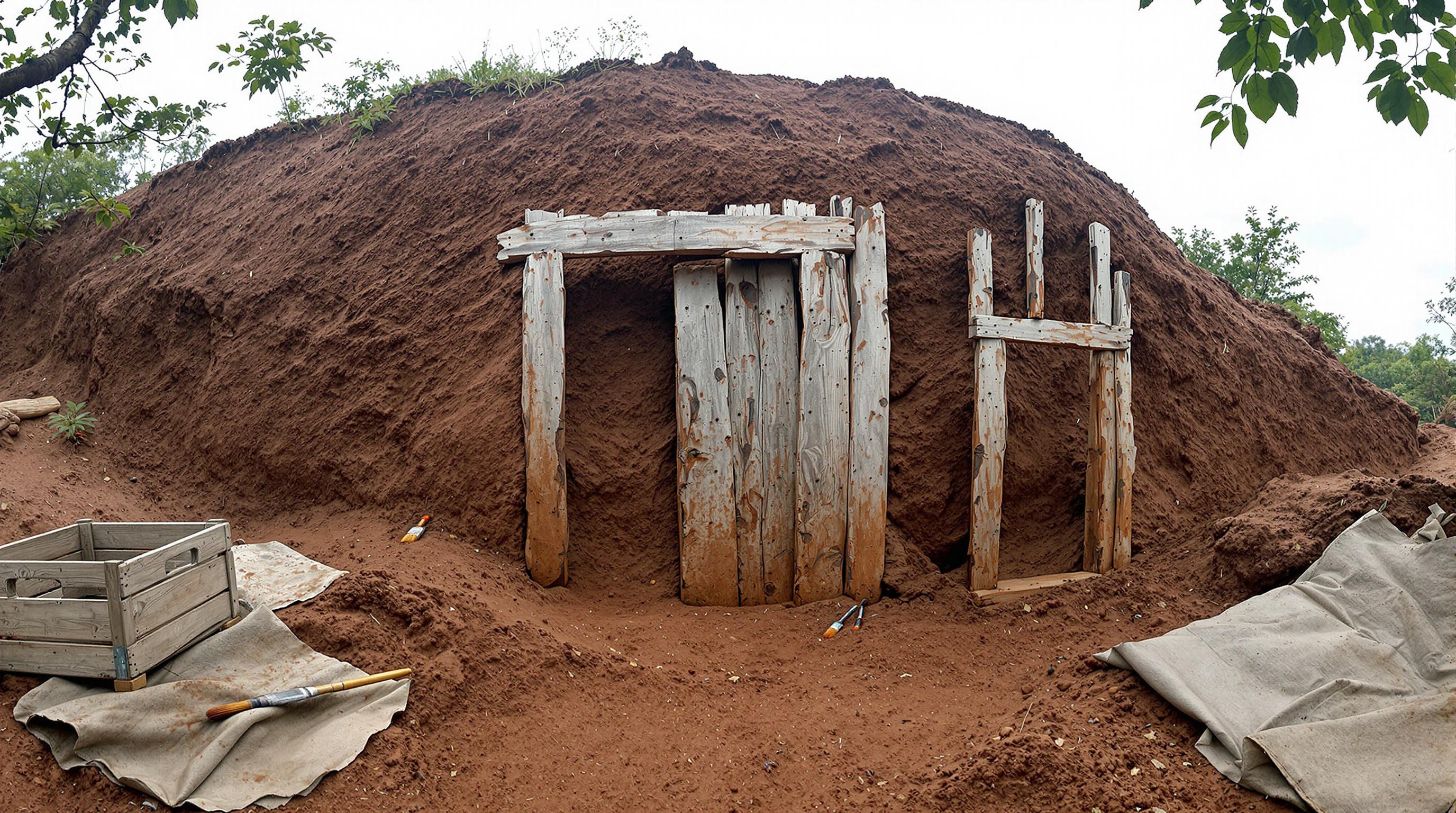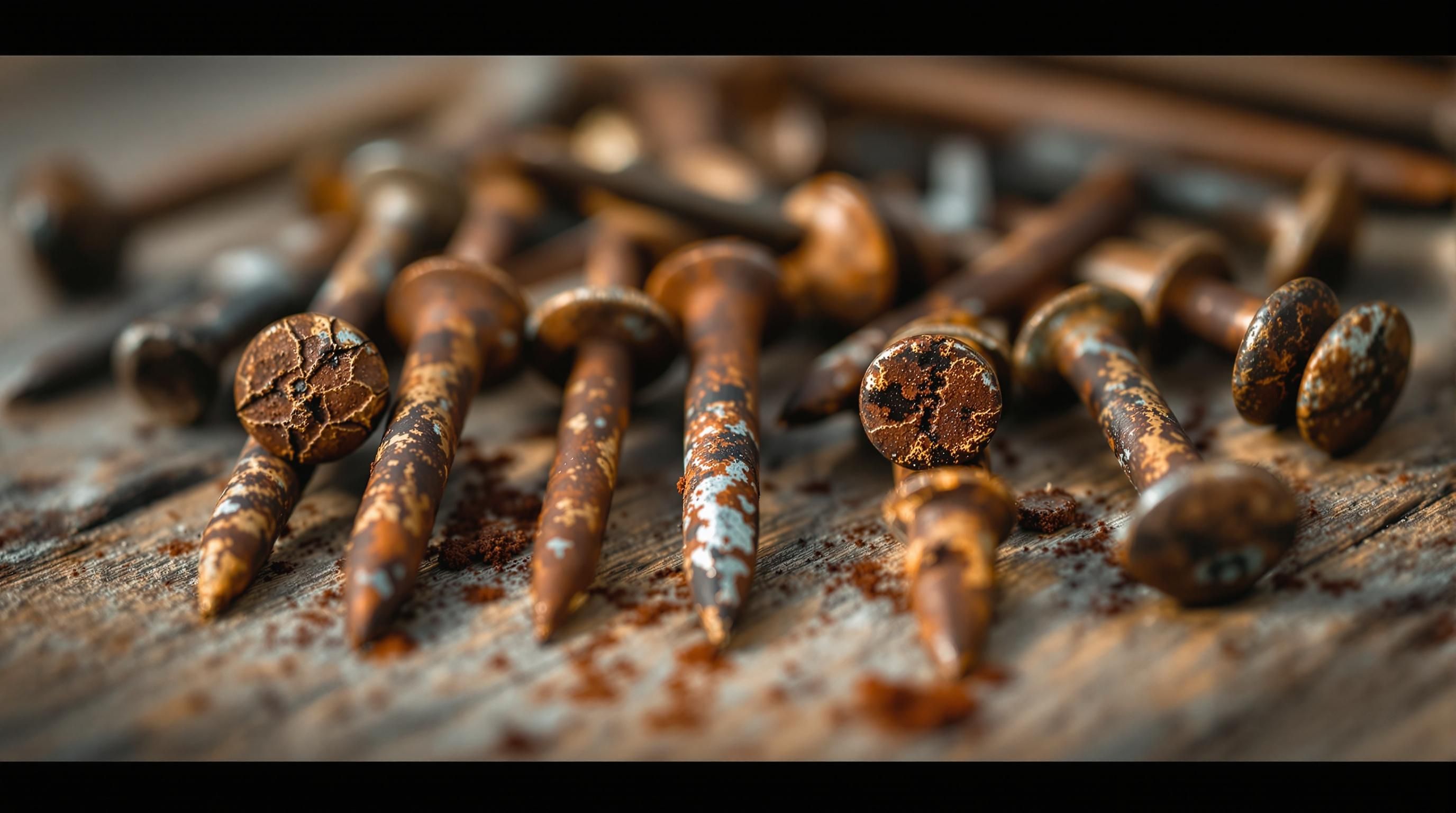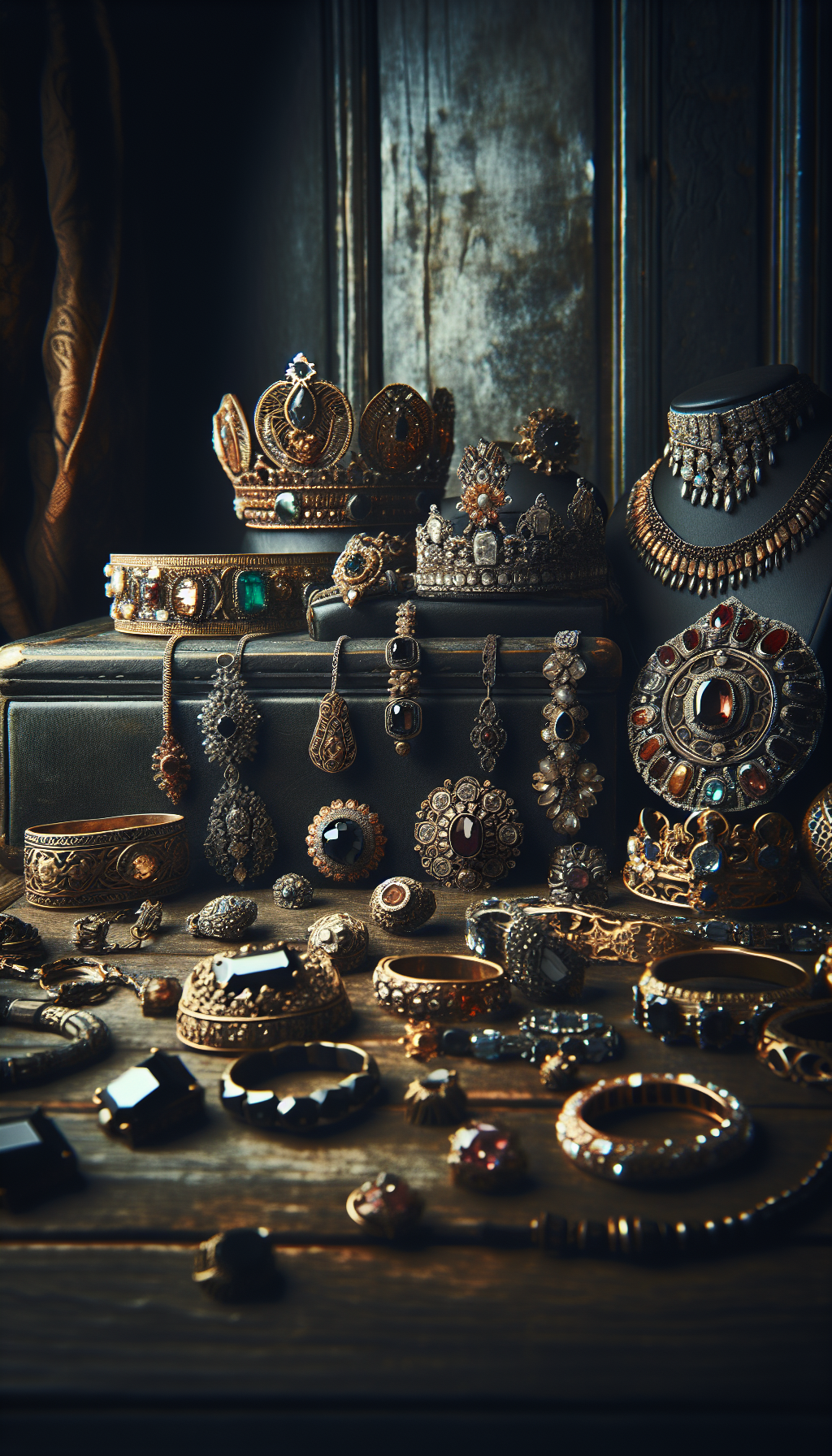Nails might seem like mundane objects, but for historians, antique collectors, and architectural preservationists, these simple fasteners can reveal fascinating details about a structure’s age, construction techniques, and historical context. Learning to identify old nails is like gaining access to a secret language that can help date buildings, furniture, and artifacts with surprising accuracy.
The humble nail has undergone significant evolution over the centuries, from handcrafted wrought nails of ancient times to the machine-cut varieties of the Industrial Revolution and the wire nails that dominate today. Each type has distinctive characteristics that serve as chronological markers.
In this comprehensive guide, we’ll explore how to identify various types of historic nails, understand their production methods, recognize key features that indicate age, and appreciate their value to collectors and preservationists. Whether you’re examining an old barn, restoring antique furniture, or simply curious about a rusty find from metal detecting, this knowledge will help you uncover the stories these everyday objects have to tell.
History and Evolution of Nail Production
Nail Chronology: A Timeline of Development
The Evolution of Nail Production
- Ancient Times - 1800
Handmade Wrought Nails
For thousands of years, nails were individually forged by blacksmiths, creating irregular yet durable fasteners with distinctive hammer marks. These wrought (meaning "worked") nails were made from iron that was hammered into shape while hot. - 1786 - 1830s
Early Machine-Cut Nails
The first nail-cutting machines appeared, producing nails from sheets of iron that were then headed by hand. These early cut nails feature irregular heads but more uniform shanks than their handmade predecessors. - 1830s - 1890s
Fully Machine-Cut Nails
Advanced machinery allowed for complete automation of the nail-making process. These nails have distinctive rectangular shanks that taper on only two sides, with machine-formed heads. - 1880s - Present
Wire Nails Dominate
The introduction of steel wire nails revolutionized construction. These round-shanked nails were cheaper and faster to produce, eventually replacing cut nails for most applications by the early 20th century.
The development of nail technology closely mirrors broader industrial progress. Examining the National Park Service’s nail chronology reveals how nail production shifted from artisanal craft to industrial mass production. This transformation not only changed the appearance of nails but also dramatically reduced their cost, making construction more affordable and accessible.
Regional differences in nail production also existed. In America, cut nail technology advanced rapidly in the early 19th century, while European manufacturers sometimes maintained traditional methods longer. Understanding these geographical variations can provide additional context when identifying old nails.
As production methods evolved, so did the raw materials. Early nails were forged from wrought iron, which contains fibrous slag inclusions that give it distinctive splitting patterns when corroded. Later cut nails used rolled iron plate, while modern wire nails are typically made from steel wire with minimal carbon content.
Identifying Wrought Nails (Pre-1800s)
Characteristics of Hand-Forged Nails
Wrought nails hold a special place in architectural history. According to the Real or Repro guide on nail identification, the earliest forged nails are immediately identifiable by their irregular shanks and distinctive hammer marks on both shanks and heads. Let’s examine their key identifying features:
Key Identifying Features of Wrought Nails
Irregular Shape: No two hand-forged nails are exactly alike. Look for slight variations in size, head shape, and overall form.
Square Cross-Section: Pre-1800 nails generally have a square cross-section throughout the shank, unlike later machine-cut nails that have rectangular shanks.
Hammer Marks: Distinctive facets and hammer marks on both the head and shank indicate handcrafting. These subtle indentations show where the blacksmith struck the hot iron.
Tapering on All Four Sides: Unlike machine-cut nails that taper on only two sides, wrought nails taper gradually toward the point on all four sides.
Rose-Head Pattern: Many wrought nails feature a distinctive “rose-head” pattern created by multiple hammer strikes around the head’s circumference.
Fibrous Metal Structure: When corroded or broken, wrought iron nails reveal a fibrous structure due to slag inclusions in the metal, often splitting longitudinally rather than breaking cleanly.
Hand-Clipped Point: The pointed tip typically shows evidence of being hand-clipped with irregularities rather than the uniform taper of machine-made nails.
If you suspect you’ve found a wrought nail, the Reddit metalworking community suggests that “vinegar or ferric will etch away crud and softer iron and show a pattern if it is 150+ year old nails” due to the wrought iron’s distinctive structure.
Regional Variations in Wrought Nails
Different regions developed distinctive wrought nail styles. Early American nails often differ from their European counterparts in subtle ways that expert collectors can recognize. Colonial American blacksmiths typically created simpler designs compared to the sometimes more elaborate European varieties, reflecting differences in training traditions and available resources.
Identifying Cut Nails (1790s-1890s)
Machine-Cut Nails: The Industrial Revolution Fasteners
According to PAST Tool Collectors, cut nails “are easily identified by tapering only on the two rough, sheared sides with the front and back sides smooth and parallel from head to point.” This unique characteristic is the result of their manufacturing process: cutting from sheet iron rather than forging from iron stock.
Early Cut Nails (1790s-1830s)
The earliest machine-cut nails represent a hybrid technology:
Machine-Cut Body with Hand-Formed Head: These transitional nails had shanks cut by machine but were headed by hand, creating an irregular head appearance similar to wrought nails.
Irregular Burrs: Early cutting technology left distinctive burrs on the cut edges of the nail.
Square Heads: As noted by the Columbia Daily Tribune, “Square-head nails were made from the late 1700s until about 1830. Most were machine-cut and finished off by a blacksmith who squared the heads.”
Iron Plate Grain Direction: In early cut nails, the iron plate grain runs perpendicular to the length of the nail, making them prone to breaking when clinched (bent over).
Fully Machine-Cut Nails (1830s-1890s)
By the 1830s, the entire nail-making process had been mechanized:
Uniform Rectangular Shanks: These nails have a consistent rectangular cross-section with two parallel sides and two tapering sides.
Machine-Formed Heads: Look for uniform, symmetrical heads, often described as “L-shaped” when viewed from the side.
Iron Plate Grain Direction: After approximately 1830, manufacturers improved the process so the iron grain ran parallel to the nail length, increasing strength for clinching.
Consistency in Size: Unlike hand-forged nails, machine-cut nails of the same type show remarkable consistency in dimensions.
Value Ranges of Historic Cut Nails
Approximate market values for collectors and restoration projects
</tbody>
</table>
According to InspectApedia’s guide on nail age determination, “Splits in a rusted or damaged nail shank illustrate the direction of iron fibres in the iron and can indicate the nail age. Across-shank = before 1830; parallel to shank = after 1830.” This is a particularly useful characteristic when examining corroded specimens.
Identifying Wire Nails (1880s-Present)
Modern Wire Nails: Revolution in Mass Production
Wire nails revolutionized construction due to their efficiency of production and use. Their distinctive features include:
Round Cross-Section: Unlike the square or rectangular shanks of earlier nails, wire nails have a consistently round cross-section from just below the head to near the point.
Uniform Taper: The taper toward the point is shorter and more uniform than in wrought or cut nails.
Flat, Round Heads: Standard wire nails feature symmetrical, disc-shaped heads that sit flat against the surface.
Machine Uniformity: Mass production created remarkable consistency, with minimal variation between nails of the same type and size.

Dating Early vs. Modern Wire Nails
Even within the wire nail category, some variations can help with more precise dating:
Early Wire Nails (1880s-1900s):
- Often slightly less uniform
- May have minor irregularities in the head formation
- Sometimes made from iron rather than steel
- May show distinctive patterns of corrosion
Modern Wire Nails (1910-Present):
- Complete uniformity in production
- Various coatings to prevent corrosion (galvanized, etc.)
- Specialized head types for different applications
According to Detecting.us guide on using nails for dating sites, “Wire nails were first manufactured in the United States in the 1860s and 1870s… By 1900, 80% of the nails produced in the U.S. were wire nails.” This timeline provides useful dating context for architectural historians and archaeologists.
Specialized and Regional Nail Types
Beyond the Basics: Specialized Historic Nails
Specialized Function Nails
Horseshoe Nails: Distinctive shape with a beveled head designed specifically for attaching horseshoes. These specialized nails have a unique “countersunk” profile to sit flush with the horseshoe.
Clinch Nails: Extra-long nails designed to be bent over (clinched) on the reverse side, providing stronger fastening. Common in boat-building and heavy timber construction.
Brad Nails: Smaller finishing nails with small heads, used for delicate woodworking and trim. Available in both cut and wire varieties, depending on the era.
Square Boat Nails: Specialized, often copper, nails used in traditional boat construction. The square shape provides superior holding power in wooden vessels.
Decorative Nails: Specialized nails with ornamental heads used for both function and decoration. These include upholstery tacks and decorative trim nails.
Regional Variations
As noted in the Connecticut Country Antiques blog, regional manufacturing differences can provide additional clues to a nail’s origin. European nails often exhibit different characteristics from American-made varieties, reflecting different industrial development timelines and traditional techniques.
In coastal regions, special copper or bronze nails resistant to saltwater corrosion were commonly used for shipbuilding. Finding these specialized nails can indicate maritime connections in historic structures.
In some regions, due to nail scarcity, wooden pegs (trunnels) were used instead of or alongside metal nails. Finding a combination of fastener types can indicate economic conditions or specific construction traditions.

Practical Guide to Field Identification
Field Identification Techniques and Tips
Basic Identification Steps
Examine the Cross-Section: The shape of the nail shaft provides immediate clues to its age:
- Square: Likely a wrought nail (pre-1800)
- Rectangular: Probably a cut nail (1790s-1890s)
- Round: Almost certainly a wire nail (1880s-present)
Check for Tapering Pattern:
- Tapering on all four sides suggests a wrought nail
- Tapering on only two sides (with the other two sides parallel) indicates a cut nail
- Short, uniform taper near the point only points to a wire nail
Inspect the Head Formation:
- Irregular, hammered appearance: Wrought nail
- Uniform but asymmetrical “L” shape when viewed from side: Cut nail
- Perfectly symmetrical, round, flat head: Wire nail
Look for Manufacturing Marks:
- Hammer facets on head and shank: Wrought nail
- Shearing marks on the tapered edges: Cut nail
- Die marks or seams: Early wire nails
As recommended in the Metal Detecting Forum, identification becomes easier with experience: “You can id them by the fact that they will have two parallel sides because that is the thickness of the steel sheet they are cut from.”
Tools for Field Identification
Field Identification Kit
Essential tools for identifying old nails in the field
- Small digital caliper for measuring dimensions
- Pocket magnifier (10x) for examining surface details
- Small wire brush for gentle cleaning
- Smartphone with nail identification reference images
- Small magnet to test material properties
- Small container of vinegar for material testing
- Notebook for recording findings and context
Special Considerations for Corroded Nails
When working with heavily corroded specimens, additional techniques can help:
Examine Corrosion Patterns: As mentioned in the Reddit metalworking community, wrought iron nails develop distinctive corrosion patterns due to their fibrous structure.
Check Breaking Patterns: If a nail is broken, examine the break. Wrought iron typically splits along fibrous lines, while later nails show more uniform fractures.
Gentle Cleaning: Use a soft brass brush to remove loose corrosion, being careful not to damage the nail surface. Avoid harsh chemicals that might destroy identifying features.
Context Matters: Always consider where the nail was found. Construction date of the building, region, and function all provide contextual clues to support identification.
Nail Collection and Preservation
Collecting and Preserving Historic Nails
Value and Collectibility
While individual nails rarely command high prices, certain types have significant collector value:
Rarity Factors: Hand-forged decorative nails, specialized industrial types, and nails from significant historic sites command premium prices.
Condition Considerations: Well-preserved examples with minimal corrosion and clear manufacturing features are more valuable than heavily deteriorated specimens.
Provenance Value: Nails with documented origin from historic buildings or archaeological sites have enhanced historical and monetary value.
Nail Collection Facts
Proper Storage and Display
To preserve historic nails:
Stabilize Corrosion: For iron nails, gentle cleaning followed by application of tannic acid solution can stabilize rust. For archaeological specimens, consult a conservation professional.
Climate Control: Store in low-humidity environments with stable temperature. Silica gel packets help maintain appropriate humidity levels.
Avoid Contact Damage: Use acid-free paper or mylar envelopes for individual storage, preventing nails from contacting each other.
Documentation: Maintain detailed records of each nail’s source, measurements, identifying features, and approximate age.
Display Options: For display, use archival foam with custom-cut recesses to hold each nail securely without damaging it. UV-filtering glass or acrylic protects from light damage.
Ethical Considerations
The National Park Service’s documentation on nail chronology emphasizes the importance of ethical collecting. Never remove nails from historic structures without proper authorization. Archaeological specimens should be properly recorded and, in many cases, reported to appropriate authorities.
For restoration projects, save original nails whenever possible. If replacement is necessary, appropriate reproduction nails matching the original type are available from specialty suppliers.
Using Nails for Dating Antiques and Buildings
Dating Techniques Using Nail Evidence
Dating Buildings and Structures
Architectural historians and preservationists regularly use nail types as chronological markers:
Terminus Post Quem: Nails establish the earliest possible date for construction. For example, wire nails indicate construction no earlier than the 1880s.
Multiple Building Phases: Different nail types in different sections of a building can reveal addition and renovation timelines.
Regional Context: Knowledge of when specific nail technologies became available in different regions refines dating accuracy.
Complementary Evidence: Nail evidence works best when combined with other dating methods, such as dendrochronology, historical records, and construction techniques.
As the Detecting.us guide notes, “Nails are a fantastic way to determine the age of a site you plan to metal detect. This guide can give you some ideas of your site’s history.”
Dating Furniture and Small Objects
For antique furniture and wooden artifacts:
Original vs. Repair Nails: Distinguish between original construction nails and later repairs, which often use more modern nail types.
Hidden Nails: Examine nails in hidden areas (underneath, inside drawers, on backs) which are less likely to have been replaced.
Construction Technique Correlation: Certain nail types correlate with specific furniture construction periods and techniques.
According to Hardware helps peg an antique’s age, “From 1830 to 1890, cabinetmakers used headless, machine-cut nails that are a tapered, rectangular shape” - a useful marker for dating American furniture from this period.
FAQ: Common Questions About Historic Nails
Common Questions About Identifying Old Nails
How can I tell if a nail is truly antique?
Examine these key indicators:
- Cross-section shape: Square or rectangular shanks indicate pre-1900 manufacture
- Manufacturing marks: Look for hammer marks (wrought) or shearing marks (cut)
- Corrosion pattern: Wrought iron nails develop distinctive fibrous corrosion patterns
- Material composition: Older nails may respond differently to magnets due to their iron content
For definitive identification, compare with established reference collections or consult with an architectural historian.
Are old nails worth anything to collectors?
Yes, historic nails can have collection value, though typically not high monetary value unless:
- They come from a historically significant structure
- They represent rare manufacturing techniques or specialized types
- They’re in excellent condition with minimal corrosion
- They have documented provenance
Decorative hand-forged nails and early machine-cut varieties in good condition can sell for $5-20 each to collectors and restoration specialists. Collections with comprehensive examples of different types command higher values than individual specimens.
How accurate is nail dating for determining a building's age?
Nail typing provides reliable terminus post quem dating (earliest possible date) with these limitations:
- Nails can’t definitively tell you when something was built, only that it couldn’t have been built before a certain date
- Buildings often contain mixed nail types due to repairs and modifications
- Recycled lumber may contain older nail types
- Regional variations in nail technology adoption create dating variations
For most accurate results, combine nail evidence with other dating methods like architectural styles, construction techniques, historical records, and dendrochronology.
What tools do I need to identify old nails?
Basic identification requires:
- Magnifying glass (10x) for examining manufacturing details
- Digital calipers for precise measurements
- Reference images of different nail types
- Soft brush for gentle cleaning
For more advanced analysis:
- Small magnet to test iron content
- Digital microscope for detailed examination
- Dilute vinegar solution for material testing
Reference collection of verified nail specimens
How do I clean old nails without damaging them?
Follow these conservation-minded cleaning steps:
- Assess condition first - heavily corroded or fragile nails may need professional conservation
- Gently remove loose dirt with a soft brush
- For stable iron nails, use a brass brush (never steel) with minimal pressure
- Avoid harsh chemicals or power tools
- For significant artifacts, consult a conservator before cleaning
Remember that some patina and evidence of age adds historical value - overcleaning can reduce both historical integrity and collector value.
Where can I find historical nails for a restoration project?
Sources for period-appropriate nails include:
- Architectural salvage businesses
- Specialty hardware suppliers for reproduction nails (Tremont Nail Co., Rockler, etc.)
- Online marketplaces (search for "historic nails" or "reproduction nails")
- Other restoration professionals who may have salvaged excess inventory
For museum-quality restorations, custom reproduction might be necessary to match exact profiles of original fasteners.
Resources for Further Learning
External Resources for Nail Identification
Nail Chronology Guide
Comprehensive National Park Service chronology of American nail types with detailed illustrations and dating information.
Nails as Clues to Age
Illustrated guide to using nail characteristics for dating antiques and identifying reproductions.
The Common Nail History
PAST Tool Collectors Association's detailed examination of nail development and identification features.
InspectApedia: Determine Age of Old Nails
Technical guide to nail dating with emphasis on architectural applications and inspection techniques.
Using Nails to Date a Site
Metal detectorists' guide to using nail chronology for site dating and historical context.
The Secrets of Nails
Connecticut Country Antiques' guide to nail identification for antique furniture authentication.
Conclusion
The humble nail, despite its seemingly simple function, contains a wealth of historical information when you know what to look for. By understanding the evolution from hand-forged wrought nails to machine-cut varieties and finally to modern wire nails, you gain a powerful tool for dating historical structures, authenticating antiques, and appreciating the technological developments that shaped our built environment.
For collectors, preservationists, archaeologists, and history enthusiasts, nail identification skills open up new dimensions of historical understanding. The distinctive characteristics of each nail type—whether the irregular hammer marks of wrought nails, the tapering pattern of cut nails, or the uniform shape of wire nails—serve as tangible connections to past construction methods and industrial developments.
Beyond mere dating, these everyday artifacts reflect broader historical narratives: the transition from artisanal craftsmanship to industrialized production, the evolution of building technologies, and the economic factors that influenced construction choices. By preserving and studying these modest pieces of hardware, we maintain important links to our architectural heritage and material culture history.
Whether you’re restoring a historic building, authenticating an antique furniture piece, or simply curious about a rusty nail found while metal detecting, the knowledge of how to identify old nails enhances your connection to the past and deepens your appreciation for the everyday objects that built our world.
Get a Professional Appraisal
Unsure about your item’s value? Our certified experts provide fast, written appraisals you can trust.
- Expert report with photos and comps
- Fast turnaround
- Fixed, upfront pricing
No obligation. Secure upload.
| Category | Price | Notes |
|---|---|---|
| Early Cut Nails (1790-1830) | $5-15 per nail | Hand-headed examples command premium |
| Machine-Cut Nails (1830-1890) | $1-5 per nail | Bulk quantities available for restoration |
| Decorative Cut Flooring Nails | $15-40 per nail | Ornamental heads increase value |




